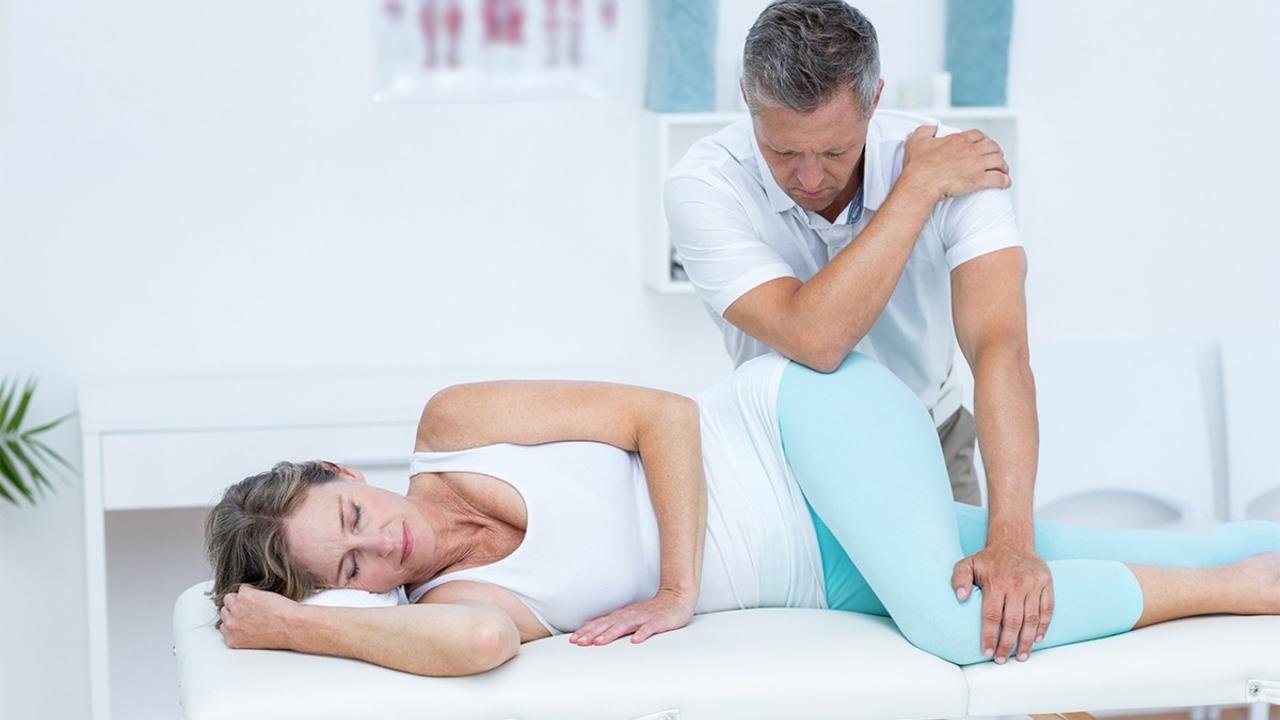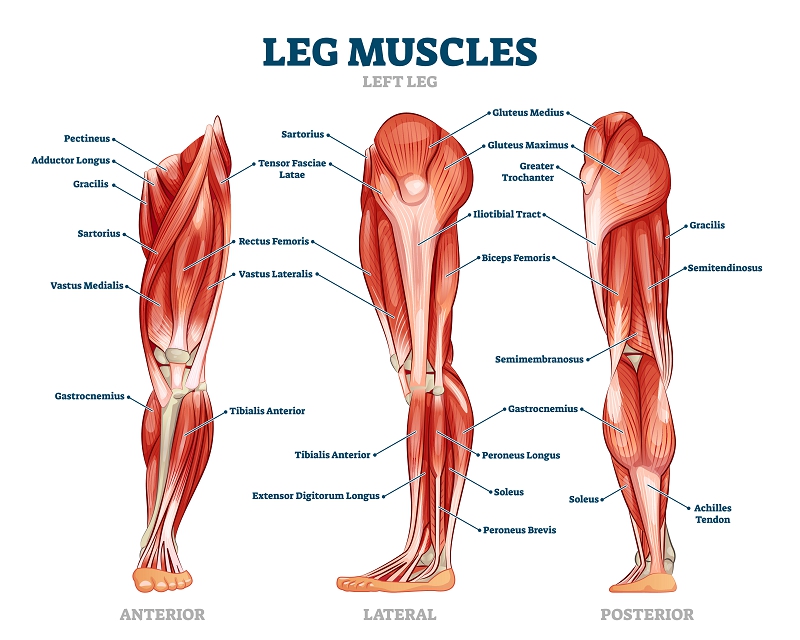Helpful Habits to Prevent Hips from Hurting!

Proof of that "It's Never Too Late"
Once, an 80-year-old woman started working with me because her left hip was hurting so bad that she could not walk up the stairs in the house anymore. Already after two weeks, she felt better and could once again waltz up those stairs. See, it's never too late to do something about aches and pains that limit your lifestyle. However, it takes some work. One method I have integrated into my workout system for rehab is trigger release. It was introduced to me 21 years ago when I became certified by NASM (National Academy of Sports Medicine). When my right ankle had kept me up at night due to an old teenage injury that caught up to me as I turned 40. With the trigger release and with some corrective exercises, I could once again get a good night's sleep. Trigger release is a miracle – try it out.
Daily Trigger Release Routine
Trigger release is a form of stretching the muscle fibers. However, if you keep on doing static stretching on a knot, it will get tighter. If you instead apply pressure to the knot, it will give in a little. That's what we want to achieve with trigger release.
There are various ways of doing trigger release. If you have a hard time lying down on the floor, I suggest a Tigerball product from Tigertail USA. Place the ball (it won't slip on the wall compared to a tennis ball) between you and the wall. More specifically on your relaxed buttock muscles. You can decide the pressure by using a lot or a little of your body weight. Move the Tigerball around to find three different juicy spots. Hold each for 10 seconds before you move to the next one. Make sure you can breathe! If it's too painful to move to the next spot. If it radiates, move the ball a few millimeters away to avoid putting pressure on the nerves.
If you can lie down on the floor, you can use a foam roller. Demonstrations from photos can be found in my book “WAKE UP Your Body + Mind After 50!” The foam roller won't' go too deep, so you can use it on many more muscles and tendons…..the IT being the most sensitive one. IT stands for Iliotibial Tract, which is a thick tendon-like extension from the muscle TFL (Tensor Fascia Latae) located on the side of the hip. It travels all the way down to below the knee. Tight IT bands can cause a lot of knee problems. Please proceed with caution because it will hurt anyone who has never foam rolled their IT bands.
If you want to go deeper than the foam roller, use a tennis ball or even the tiger ball. It works best on muscles that have a lot of cushions, like the buttock muscles.
If you want to reach the muscles running along each side of the spine, you can tape two tennis balls together with duct tape and place them below the cervical spine – the curved part behind your neck – and roll it down slowly and gently down the lower back. You can either lie on your back on the floor or stand to lean up against a wall.
For veterans like me, we even use a wooden roller. That will be too painful for the novice person. Remember, trigger release should not be painful. It can be a good pain if you know what I mean. But if it hurts to the point where you can't breathe, you are doing yourself a disservice. A tight muscle will not give in. You have to be able to relax and breathe while doing a trigger release.
Finally, you may want to book a massage and ask them to do acupressure, which is precisely what trigger release is all about. Enjoy!
Bones Forming the Hip Joint
Do you think you can feel (touch) the hip joint?
Here are some photos to navigate you through our hip joint and surrounding bones. The first photo shows the location of the hipbones. The second photo is a close up of the location of the hip joint. It's the femur's neck/head (thigh bone) that attaches to the hip bone and becomes the hip joint. There's no way you can feel the hip joint's bone because it sits so deep into its socket wrapped in/covered by ligaments and muscles etc., to keep it in place. Most likely, though, will you feel the top part of the femur (Greater Trochanter) before it continues to form the neck/head. If you take the widest part of your buttocks/hips, you will find a bony part on the side of the thigh. That's the Greater Trochanter. If you experience some pain in the hip joint, you most likely will feel tenderness if you push lightly into the soft part in the front of the thigh below the upper outer edge of the hipbone.
.

Muscles Involved – Layers of "Clothing"
Think about the muscles as clothes for the skeleton. It can get quite confusing locating some muscles due to the many layers of "clothing." Some muscles are so deep we can't feel them, while some muscles are superficial and can easily be felt to the touch. See if you can find some familiar muscles in the below photos. Look for the muscles covering the hip area like the gluteus maximus and medius (covering back and side). Isn't it amazing how we are all constructed? No wonder if something's built a little bit tilted or off that we experience some pain. Remember that these are just photos of bones and muscles. If you add nerves to the clothing layer, making them "accessories" (i.e., very essential accessories 🙂), you may better understand how nerves can easily get pinched, resulting in pain. One muscle usually gets blamed for the sciatic pain, and it's called the piriformis. It runs close to the sciatic nerve. Stretching that muscle sometimes gives excellent relief from the sciatic pain.

Time to Practice
After you have done some trigger release on the buttock muscles, it's always good to follow some bridge to fire the muscle fibers that have now awoken.
- Lie on the floor or a bench or maybe even in bed.
- Find your neutral spine and lock it by pulling lightly in the navel. Now you have created your girdle.
- Gentle squeeze your buttocks and make sure nothing hurts.
- Continue lifting the hips as you exhale and lower them as you inhale. Do it slowly and controlled. Explore first with a tiny lift and proceed to a higher charge if it feels good, especially on that lower back.
- If this is a piece of cake, hold the hips at the highest level for 30-60 seconds. Maybe even add some weight resting on your lower stomach. Make sure it feels comfortable.
- If you are strong enough, you can proceed (without the weight on your stomach) to stretch out one leg straight into the air keeping both knees at the same level. You should quickly feel one buttock is working.
- Suppose the hamstring is close to cramping. Push the same leg's heel down into the ground to help the buttock work harder. Try to work up to hold each leg for 30-60 seconds.
- Remember, quality is more important than quantity. If your hips are not even and you're too tired to make them leveled, then take a break.
- Pay attention to if one buttock muscle is stronger than the other. If that's the case, do two sets on the weaker side.
- The benefits of doing a bridge are dual. It strengthens the buttocks, and it stretches the hip flexors (opposing muscle to the buttocks). Please make it a goal always to do some form of a bridge exercise regardless of your age.
Specializing in Correcting Muscular Imbalances
I have had the privilege to work as a personal fitness trainer with the 50+ population for more than 30 years. It's been an excellent observation of what can happen if you listen or don't listen to your body. Good things can happen when you don't give up the search for improvement. You keep being stubborn about seeking alternatives when an injury persists. I've seen incredible results from clients adjusting and accepting instead of giving up. Suppose you don't maintain the muscles strong and flexible around the hip joint. In that case, it's been my experience that the lack of strength in one of the buttocks can make you limp, resulting in the healthier side working overtime and breaking down sooner than the weaker leg. The lack of flexibility in the hip flexors will force you to walk leaning forward, putting extra and unnecessary weight on the lower back. I hope this article has given you some ideas, with which you can start working. Please feel free always to contact us at [email protected]
Share Your Story
The goal is to create a community of wisdom. Please share your story! Contact us and let us know about your hip problems and how you have solved your pain. Was there a particular procedure? Is there a referral to a health professional? Medical doctor? Physical Therapist? Chiropractor? Acupuncture? Massage Therapist? etc.
Awareness Practice for the Next 30-Days — Pay Attention to Your Hips
Make this month your priority to take care of your hips. If you have ignored them, let me remind you of the fact that you will need them for a very long time, so you better start paying attention to them! Enjoy discovering new things about your body as you do trigger release!

As a fitness expert for 30 years for the 50+ population, I have witnessed fantastic progress and results for people that have stayed consistent over time. I’m sure you can see how it’s all related. Weak bones and weak muscles equal pain. Strong bones and strong muscles equal less pain and more quality of life.
According to ACSM (American College of Sports Medicine), strength training should be performed at least twice a week with 8-10 different exercises that target all major muscle groups. And of course, you must do them correctly to avoid injuries. And that is exactly what the Nordic Body System is all about.
Every month you will get access to one LIVE online group workout per month with the EXPERIENCE Membership Program to get a taste of the Nordic Body System to see if it’s a good fit.

